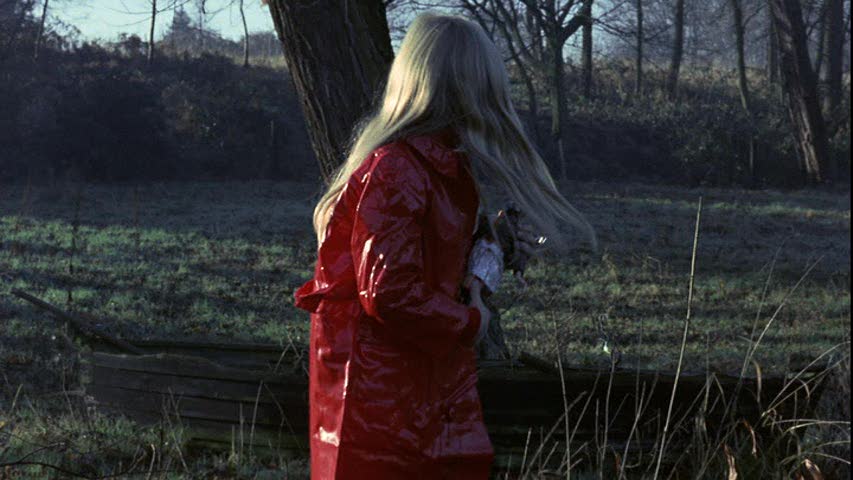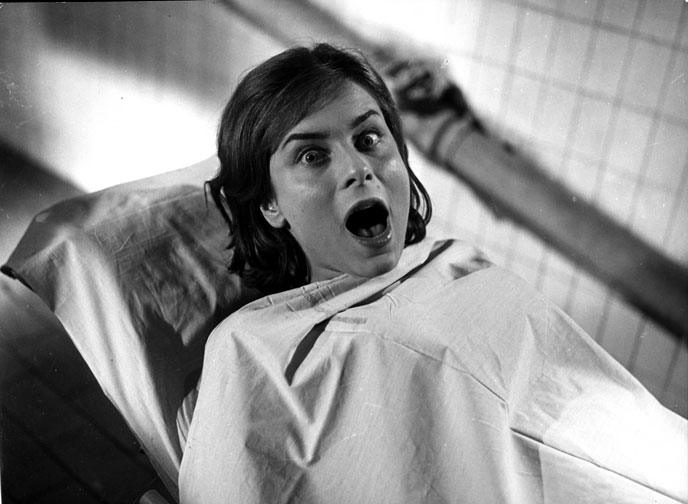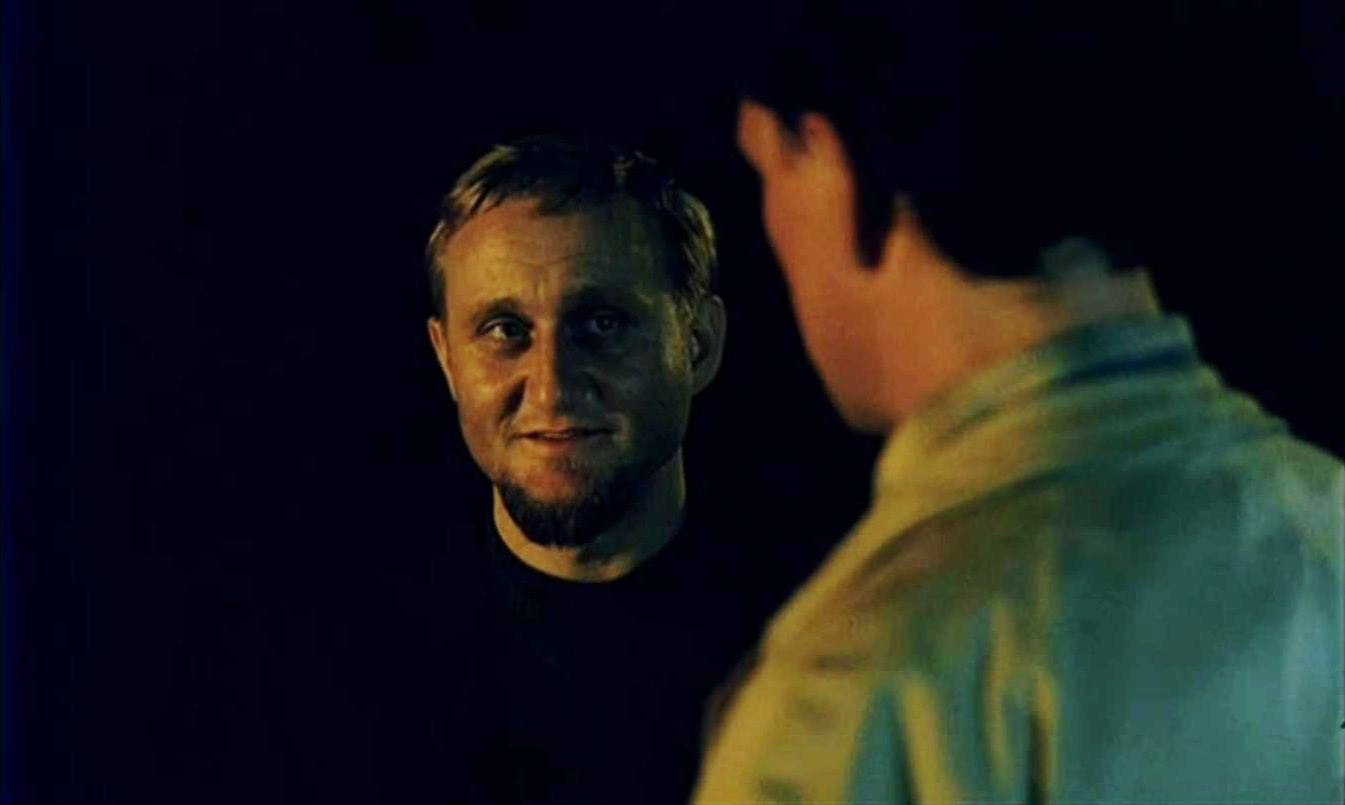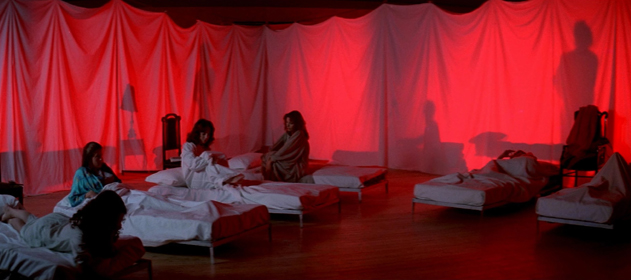7. Possession (1985, France/West Germany)

Inspired by director Andrzej Zulawski’s failed marriage, French/German co-production Possession is a nightmarish psychological drama revolving around a married couple in the midst of a break up. Secrets, lies, unexplained twins, and buckets of blood all feature to make this cinema’s most visceral depiction of divorce ever.
The extreme raw emotion displayed by Sam Neill and Isabelle Adjani make for uncomfortable viewing – ranging from Neill’s nervous energy, to mutual self harm and finally Adjani’s hysterical subway breakdown. Her demented intensity won her the Cannes Film Festival award for Best Actress.
The dual meanings of Possession are both addressed, not only is Adjani seemingly taken over by a demonic influence but in Neill’s obsessive objectification of his absent wife – she is his possession no more. Similar thematically to Audition in that it focuses on a former dancer lead female character whose identity is based around her relationships with men, the dissolution of which leads to violent ends.
The subtitle The Night the Screaming Stops is ill-fitting for a film featuring so much ceaseless wordless shrieking, both on screen and provoking it from the audience.
6. The Cabinet of Doctor Caligari (1919, Germany)
For all intents and purposes this is where horror as a cinematic genre began. In literature and theatre horror had had a grand history, but The Cabinet of Doctor Caligari was when horror gained its filmic style and language.
Heightened, exaggerated acting, angular scenery and effective use of shadows are used to create unease and became the blueprint for all horror films to come. The film’s influence is remarkable, both in respect to the German Expressionist movement and beyond: Mickey Mouse’s trademark gloves inexplicably previously belonged to the titular Dr. Caligari.
Using a storyteller framing device, The Cabinet of Doctor Caligari revolves around the arrival of an hypnotist and his cabinet dwelling perma-asleep companion Cesare. After murders occur in the community blame is pointed at the super-natural pair, an investigation is carried out to reveal the truth.
Cesare is a prototype for every cinematic knife-wielding psychopath since, as well as inspiring the movement of both Frankenstein’s Monster and the undead stare of many a zombie. Seen in a modern light, monochrome combined with the wordless silence increases the already inherent otherworldliness of the film. Without this gem, this list would not exist.
5. Zombie (1979, Italy)
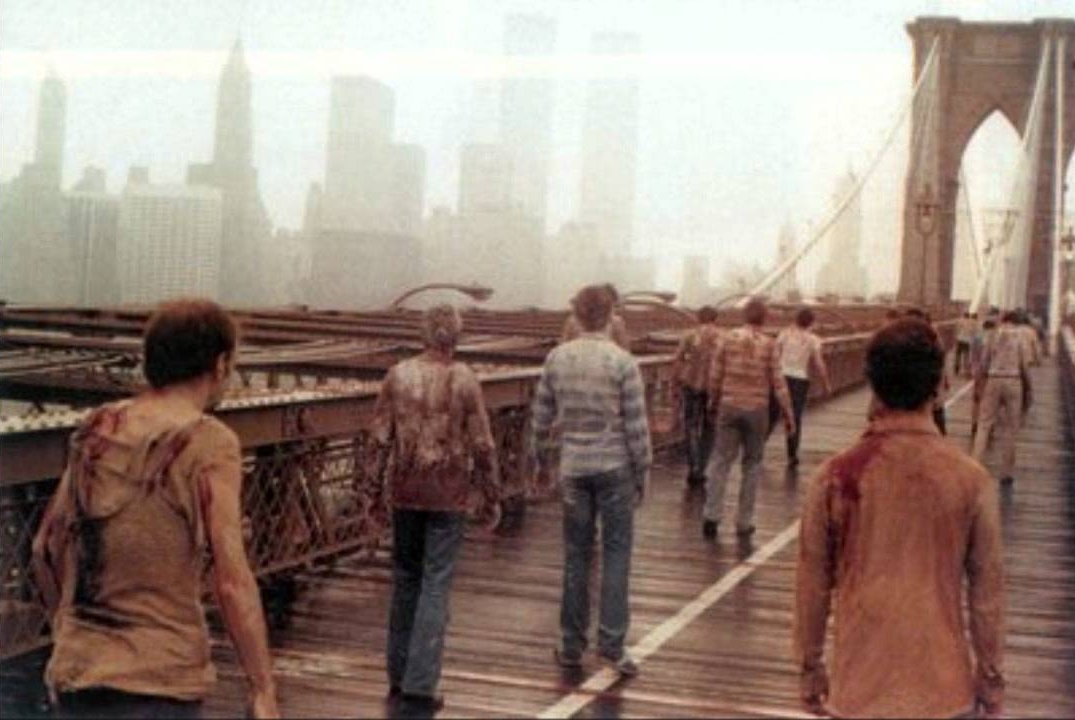
Though quickly rewritten to include the undead in an attempt to cash-in on the success of Romero’s Dawn of the Dead the previous year, Lucio Fulci’s Zombie (aka Zombie Flesh Eaters, aka Zombi 2) has become one of the most influential films of the sub-genre. Iconic for its incredible use of special effect gore: exploding heads, haemorrhaging neck wounds, skewered eyes, and flapping dripping flesh hanging from the mouths of the undead.
Focusing on zombies as a side-effect of voodoo practices Zombie is set on a Caribbean island with scientists attempting to find the logical cause for the disease. The daughter of one of the scientists travels to the island with a journalist, and a couple of underwater photographers in search of her absent father but they are soon confronted by its zombified residents.
Though Fulci created other masterful horrors such as Don’t Torture a Duckling and The Beyond, Zombie is the film that got him the namecheck in Shaun of the Dead. Possibly the only film where a zombie fights a shark, and therefore essential viewing.
4. Don’t Look Now (1973, UK)
Nicolas Roeg’s Venice-set mystery/thriller is a singular creation – the title alluding to the common horror viewing practices of hiding ones eyes from the carnage, but conversely one must watch Don’t Look Now with unflinching eye to unlock its meaning. As Donald Sutherland’s John Baxter says “Seeing is believing”.
Built like a puzzle (or possibly a mosaic), through labyrinthine streets Roeg uses repeated motifs (water, smashed glass, the colour red and audio cues) to act as clues for the final reveal, while the cinematography is used to hide information via blocking and shallow focus. There is a subliminal Giallo influence on the film due to the use of colour, murder mystery plotting and the Italian setting.
A married couple travel to Venice in an attempt to forget about a recent tragedy but the husband (Sutherland) is haunted by visions of their deceased daughter, which is acerbated by the presence of two possibly psychic, possibly malicious elderly sisters.
Controversial on release due to the fairly explicit (for 1970’s cinema) sex scene between Sutherland and his on-screen wife Julie Christie, and unfairly misunderstood it was years later that it started to be hailed as an innovative classic of the horror genre.
The almost non-sequitar, gut-punch of an ending is perhaps the greatest ending in the entirety of cinema, or at least the least expected. A film to re-watch and over-analyze.
3. Eyes Without a Face (1960, France)
Previously it was written here that 1960 was a hallmark year for horror and Psycho and Peeping Tom were mentioned; though both are highly important films neither are as chilling, horrific or emotionally moving as Georges Franju’s Eyes Without A Face.
The oldest film still with an UK 18-rated certificate, on its original release the film was met by poor critical response and that Franju was working beneath himself by making a genre film but recently Eyes Without A Face has begun to be rightly recognised as a masterpiece.
After a car crash in which Christiane’s (Edith Scob) face is horribly burnt, her surgeon father (Pierre Brasseur) attempts to replace her skin with that of various young women whom he kidnaps. The experiments fail and the various young women die but Christiane’s father continues his work.
The film features extremely graphic (for 1960’s cinema) surgery scenes and is a very obvious influence of Pedro Almodóvar’s The Skin I Live In. The image that will be grafted onto your mind is Christiane’s mournful eyes staring out of her bandaged skinless face – while chilling, one cannot help but feel sorry for her, disfigured and alone.
2. The Vanishing (1988, Netherlands)
A couple go travelling only for Saskia (Johanna ter Steege) to go missing leaving Rex (Gene Hofman) to wonder what happened. When three years later Rex starts receiving letters about his lost girlfriend curiosity gets the better of him. While other horrors on this list rely on supernatural phenomenon to thrill or scare an audience, George Sluizer’s The Vanishing concentrates on the extremely human fears of loss, regret and guilt.
Witness how Rex obsessively search the area where Saskia disappears, retracing her footsteps. As an audience we are connected with that experience, everyone has been lost or lost someone before – the mind races, thinking a million impossible thoughts – and that is why The Vanishing is so scary, this could be us.
Author Tim Krabbé found the inspiration for The Vanishing (Dutch title: Spoorloos) from a newspaper article about a female tourist who did not return to her tour bus after buying gum and after a two day search was never found – he later, after research, found out that she just accidentally boarded the wrong bus and was in fact alive and well.
Though an Americanized 1993 version starring Jeff Bridges exists it is advised to ignore it and its vanilla ending; 1988’s The Vanishing is the film that will haunt the next separation from your significant other.
1. Suspiria (1977, Italy)
Suspiria should really be your favourite film. One of the few horrors (with The Silence of the Lambs, The Exorcist and possible Audition) that transcend the genre, Dario Argento’s supernatural candy-coloured ballerina flick is the story of an American dancer (Jessica Harper) who travels to an Italian dance academy which is unfortunately run by witches.
The hallmarks of Argento’s work are all present: the jazzy prog-rock of Goblin’s score (complete with whispered/shouted “WITCH”s), OTT emotions, and unlikely deaths (death by falling into reels of barbed wire and demon dogs are highlights).
The film starts with an opening sequence par excellence – a haunting voiceover explaining the plot, a rain-soaked airport to an ultra production-designed art deco hotel, disembodied eyes in the darkness, screaming, a hanging, magenta blood and skull sliced by falling glass.
While Argento’s work (and possibly the entirety of the horror genre) can be boiled down to “beautiful women getting slaughtered”, there are few cinematic experiences as joyous as when Argento is at his best and Suspiria is his very best. Go watch Suspiria – Deep Red and Opera are also highly recommended.
Author Bio: Ashley Robak should really try harder. He has a BSc in Film Production, a film blog which is sometimes updated (http://ashleypurplecamera.wordpress.com) and occasionally contributes to On Record Magazine. When not writing about film, he attempts to make his own with Purple Camera Media (http://vimeo.com/purplecamera).

